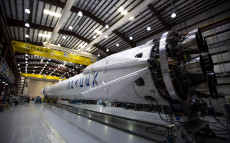- pathfindersAI
- Job Profile
Wind Energy Engineers
Summary
Wind Energy Engineers: Harnessing the Power of Nature
The quest for cleaner, renewable energy sources has never been more crucial as the world grapples with the challenges of climate change and dwindling natural resources. In this context, Wind Energy Engineers emerge as pivotal actors in the realm of sustainable energy solutions. This essay delves into the career profile of Wind Energy Engineers, highlighting their roles, responsibilities, essential skills, educational pathways, and career prospects.
What They Do
Wind Energy Engineers are specialized professionals within the broader field of renewable energy engineering. They are primarily concerned with the design, development, and operational efficiency of wind turbines and related systems used to convert wind power into usable electrical energy. These engineers apply principles of mechanical, electrical, and environmental engineering to optimize the performance and cost-effectiveness of wind energy systems. Their work not only involves the creation and testing of new technologies but also the implementation of these systems in real-world scenarios, including wind farms on land and offshore installations.
Job Responsibilities
The responsibilities of Wind Energy Engineers are multifaceted, often requiring a combination of technical expertise and project management skills. Key duties include:
- Design and Development: Creating and testing new wind turbine prototypes and components to improve efficiency, reliability, and cost-effectiveness.
- Site Assessments: Conducting detailed analyses of potential wind farm locations to ensure optimal wind conditions, environmental sustainability, and minimal impact on local wildlife.
- Implementation: Overseeing the installation and commissioning of wind turbines and related infrastructure.
- Operational Maintenance: Developing maintenance protocols and troubleshooting mechanical and electrical systems to ensure continuous operation.
- Data Analysis: Using computational tools to model wind currents and predict energy output.
- Regulatory Compliance: Ensuring that projects meet national and international safety, environmental, and zoning regulations.
- Collaboration: Working with cross-functional teams, including environmental scientists, policy makers, and financial analysts, to bring projects from concept to fruition.
Essential Skills
Successful Wind Energy Engineers possess a unique blend of technical knowledge and practical abilities. Among the essential skills are:
- Analytical Thinking: The ability to understand and interpret complex data regarding wind patterns, mechanical performance, and environmental impact.
- Problem-Solving Abilities: Creativity and resourcefulness in addressing technical challenges and optimizing system performance.
- Technical Proficiency: A strong foundation in mechanical, electrical, and environmental engineering principles.
- Project Management: Skills in planning, executing, and managing large-scale projects within budgetary and time constraints.
- Communication: Effective written and verbal communication to collaborate with diverse teams and present findings to stakeholders.
- Attention to Detail: Meticulousness in conducting site assessments, analyzing data, and monitoring system performance.
Educational Pathways
The journey to becoming a Wind Energy Engineer typically begins with a Bachelor’s degree in Mechanical Engineering, Electrical Engineering, Environmental Engineering, or a related field. Coursework in fluid dynamics, renewable energy systems, materials science, and electrical circuits is particularly relevant. Many professionals also pursue advanced degrees, such as a Master’s or Ph.D., specializing in renewable energy engineering or a specific aspect of wind energy technology. In addition, internships or cooperative education experiences with energy companies or research institutions provide practical experience and industry connections.
Career Prospects
The career prospects for Wind Energy Engineers are robust and expanding, driven by the global emphasis on renewable energy to mitigate climate change. Graduates can find opportunities within renewable energy companies, utility providers, government agencies, research institutions, and engineering consulting firms. As the demand for sustainable energy solutions increases, so does the need for skilled engineers who can innovate and improve wind energy systems. Furthermore, advancements in technology and governmental policies supporting green energy initiatives are likely to enhance job growth in this industry.
Conclusion
In summary, Wind Energy Engineers play a critical role in the modern energy landscape, leveraging their expertise to develop and implement sustainable wind energy systems. With a combination of strong educational backgrounds, technical prowess, and project management skills, these professionals are well-equipped to meet the growing demand for renewable energy solutions. As the world shifts towards greener energy practices, Wind Energy Engineers will be at the forefront, driving innovation and ensuring the efficient harnessing of one of nature’s most powerful forces.
Video
Compensation
| State | Median Salary | Median Hourly | Positions |
|---|---|---|---|
| SD | * | * | 100 |
| AL | 136,990 | 65.86 | 3,480 |
| AK | 124,790 | 60.00 | 310 |
| AZ | 104,660 | 50.32 | 2,560 |
| AR | 73,160 | 35.18 | 500 |
| CA | 128,620 | 61.84 | 31,490 |
| CO | 124,440 | 59.83 | 2,590 |
| CT | 126,400 | 60.77 | 2,120 |
| DE | 131,980 | 63.45 | 210 |
| DC | 158,830 | 76.36 | 2,640 |
| FL | 100,140 | 48.14 | 8,080 |
| GA | 113,230 | 54.44 | 3,750 |
| HI | 119,770 | 57.58 | 720 |
| ID | * | * | 1,050 |
| IL | 107,490 | 51.68 | 2,740 |
| IN | 100,720 | 48.42 | 1,920 |
| IA | 87,940 | 42.28 | 420 |
| KS | 65,570 | 31.52 | 760 |
| KY | 84,340 | 40.55 | 890 |
| LA | 92,600 | 44.52 | 6,950 |
| ME | 102,480 | 49.27 | 650 |
| MD | 131,440 | 63.19 | 6,240 |
| MA | 120,460 | 57.91 | 3,180 |
| MI | 97,530 | 46.89 | 4,720 |
| MN | 108,360 | 52.10 | 1,900 |
| MS | 107,810 | 51.83 | 520 |
| MO | 95,980 | 46.15 | 1,610 |
| MT | 79,480 | 38.21 | 400 |
| NE | 75,560 | 36.33 | 460 |
| NV | 84,580 | 40.66 | 700 |
| NH | 108,550 | 52.19 | 590 |
| NJ | 125,270 | 60.23 | 3,670 |
| NM | 134,650 | 64.74 | 2,180 |
| NY | 109,170 | 52.49 | 5,570 |
| NC | 105,860 | 50.89 | 2,890 |
| ND | 83,990 | 40.38 | 260 |
| OH | 106,390 | 51.15 | 6,530 |
| OK | 101,760 | 48.92 | 1,130 |
| OR | 125,110 | 60.15 | 2,690 |
| PA | 100,280 | 48.21 | 4,850 |
| RI | 129,160 | 62.10 | 480 |
| SC | 106,540 | 51.22 | 1,640 |
| TN | 86,070 | 41.38 | 4,350 |
| TX | 108,380 | 52.10 | 8,200 |
| UT | 102,220 | 49.15 | 1,920 |
| VT | 100,490 | 48.31 | 550 |
| VA | 136,490 | 65.62 | 5,670 |
| WA | 113,190 | 54.42 | 2,740 |
| WV | 127,880 | 61.48 | 430 |
| WI | 101,040 | 48.58 | 770 |
| WY | 130,490 | 62.74 | 210 |
Similar Occupations
In this area you will find other occupations that are close to the one you were viewing in tasks, knowledge and work environment. If the primary job profile you are viewing isn't quite to your liking, take a look around and see what else is available.
Basic and Premium Accounts have more alternative occupations available than the Free account.

Aerospace Engineers - 17-2011.00
Aerospace Engineers design, develop, and test aircraft, spacecraft, and related systems and equipment to ensure they meet safety, performance, and regulatory standards. They work on a range of areas including structural design, navigation systems, propulsion, and aerodynamics to advance aviation and space exploration technology.
-
$130,720/yr
Median Pay -
66,660
Number of Jobs

Automotive Engineers - 17-2141.02
Automotive Engineers design, develop, and improve vehicles and their subsystems, ensuring they meet performance, safety, and efficiency standards. They work on tasks ranging from creating prototypes to conducting rigorous testing and collaborating with multidisciplinary teams to bring innovative automotive solutions to market.
-
$99,510/yr
Median Pay -
281,290
Number of Jobs